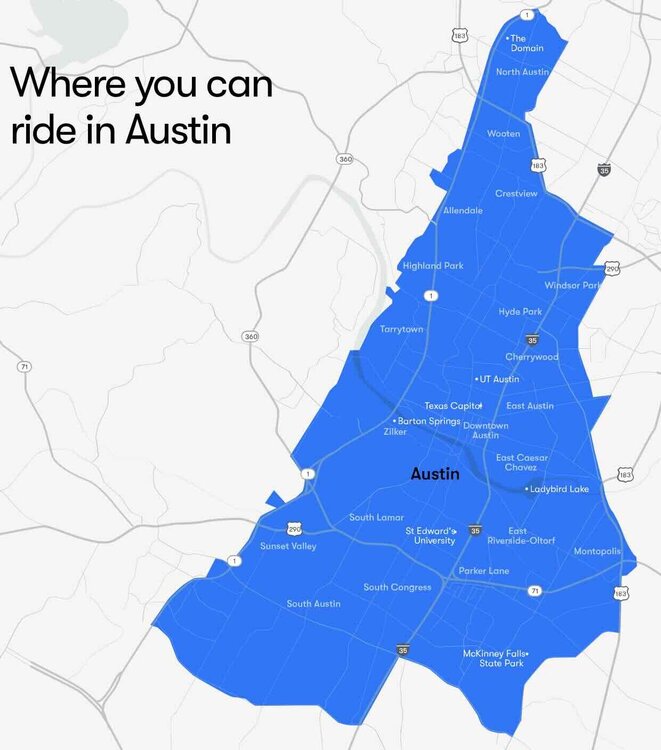
Texas Jeff
Legacy Members-
Posts
1320 -
Joined
-
Last visited
Reputation
2388 Surly 10%Recent Profile Visitors
The recent visitors block is disabled and is not being shown to other users.
-
About Trump's health... Older folks go through three phases of decline. They have the "go-go" years, when most have stopped working and are physically fine and they can vacation where and when they want to. They transition to the "slow-go" years, where they have some medical or cognitive issues, but they can still travel near their home, meet with friends, and enjoy being social. And eventually they end up in the "no-go" years, where they mostly go to medical appointments and stay at home. We saw Biden move from "go-go" to "slow-go". Trump is now going through that transition, although he probably doesn't accept that he's in physical decline. Biden and Reagan had a staff and a family to lean on. Trump does not have that. He's an old man with one of the most stressful jobs on the planet, and he's mostly alone. HIs health is going to decline, first with small things like what we are seeing now, but years 3-4 are going to be rough.
-
Elon Musk: Nazi traitor piece of shit [Confirmed]
Texas Jeff replied to MaybeACoordinator's topic in Daily Texan
I'd like to point out that Waymo in 2025 now covers the entire area that Project Connect's rail system may cover in 2035. -
Elon Musk: Nazi traitor piece of shit [Confirmed]
Texas Jeff replied to MaybeACoordinator's topic in Daily Texan
-
I believe the rice farmers' supply is interruptible, meaning that LCRA can turn them off in times of drought. Not sure when we qualify as no longer in a drought. LCRA just finished and filled a new reservoir downstream from Austin, the Arbuckle Reservoir, which is 90,000 acre-feet of new storage. By comparison, LT is around 1,100,000 acre-feet when full, and a lot more when flooded.
-
Texas Jeff started following 2025 Celebrity Death Pool , July 4th Hill Country Flooding Tragedy , 4th of July Texas Flood and 4 others
-
The NY Times has an article out discussing DOGE cuts that directly affected the weather forecasting for the area, sorry if this is behind a paywall. https://www.nytimes.com/2025/07/05/us/politics/texas-floods-warnings-vacancies.html?smid=url-share Here's a snippet from the article tying Trump's DOGE "early retirement" effort to the removal of the "warning coordination" meterologist in San Antonio, the office responsible for the area around the camp: The National Weather Service’s San Angelo office, which is responsible for some of the areas hit hardest by Friday’s flooding, was missing a senior hydrologist, staff forecaster and meteorologist in charge, according to Tom Fahy, the legislative director for the National Weather Service Employees Organization, the union that represents Weather Service workers. The Weather Service’s nearby San Antonio office, which covers other areas hit by the floods, also had significant vacancies, including a warning coordination meteorologist and science officer, Mr. Fahy said. Staff members in those positions are meant to work with local emergency managers to plan for floods, including when and how to warn local residents and help them evacuate. That office’s warning coordination meteorologist left on April 30, after taking the early retirement package the Trump administration used to reduce the number of federal employees, according to a person with knowledge of his departure. Later in the article: Under the Trump administration, the Weather Service, like other federal agencies, has been pushed to reduce its number of employees. By this spring, through layoffs and retirements, the Weather Service had lost nearly 600 people from a work force that until recently was as large as 4,000. The flooding was certainly an extreme event. A fully staffed office probably would not have prevented tragedy. But maybe it would have. Maybe a "warning coordination meteorologist" would have helped local officials realize they needed a checklist or system in place to help these RV parks or camps in harms way, as summer approached. Maybe not. But firing the person and firing staff systemwide helped ensure warnings did not reach those in need. Little cracks in our systems are now in place all over America, thanks to Trump and Elon and DOGE, who are making America great again.
-
Big Sandy Creek near Jonestown is up 4 ft in the last 30 mins. The flow is 10x higher than it was 30 mins ago.
-
I visited the National Archives in May. Very cool. Takes about an hour with a timed ticket. I am amazed that the common folk can get that close to the real founding docs. However, it would kinda not be America if everyone couldn't go take a look for themselves. If you would like to check it out from home, the Archives has a great website with document scans and articles about the docs. The website has smaller versions that you can click on or larger ones you can download. The actual documents are pretty faded, although the Constitution is in better shape than the Declaration and the Bill of Rights. https://www.archives.gov/founding-docs The scans on that site look almost exactly like what I saw in person on display. I was looking at the scans before I went and I saw a handprint in the corner of the Declaration. Sure enough, when I got there, you could see the handprint.
-
Lake LBJ has gone up about a foot and a half over the last hour. Looks like the first water has made it about that far.
-
Within minutes of yesterday's bill passage, I received a propaganda email from the Social Security Administration, the text was the same as their post here. I'm not sure why I got it. I'm not due for benefits for a long time. I did request a social security statement of past wages and an estimate of future benefits a few years ago, the thing they used to send in the mail. The email talks about how the bill "ensures that nearly 90% of Social Security beneficiaries will no longer pay federal income taxes on their benefits". Well, currently about 64% of seniors already don't pay tax on SS benefits. So about 25% of seniors may get a new tax benefit in the form of an increased deduction. The email also says "The new law includes a provision that eliminates federal income taxes on Social Security benefits for most beneficiaries, providing relief to individuals and couples. Additionally, it provides an enhanced deduction for taxpayers aged 65 and older, ensuring that retirees can keep more of what they have earned." I'm reading the bill and I don't think the first sentence is true. The second sentence is true, they provided a new $6000 exemption for those over 65 that qualify. The second sentence (the deduction) is what they are claiming provides the first sentence (elimination of SS tax). They are stating it twice as if they were separate benefits. The new $6000 deduction expires in four year and is phased out for above certain income levels ($75,000 for individuals, $150,000 for couples). It's unclear to me if you have to itemize to get the deduction or if it is more like an exemption. Had they NOT included this section in the bill, the $4000 personal exemption would have come back for everyone below the exemption phaseout income level, which was $250k-$300k in 2015 depending on your filing status. Seniors are going to read this email and think that Trump eliminated tax on Social Security. It will be used as a rallying cry in the mid-terms. No such thing happened. One in four seniors may get a new benefit, and had the government done nothing at all then most of us would have gotten a benefit. And the administration is pushing out misleading information presented as official government communications. This is Trump's America.
-
Evidently a woman accidentally shot herself in the hand yesterday in the produce section of the Mueller HEB. She allegedly had a gun in her purse and she reached in and whammo. Out of all the HEBs in Texas, I would have never guessed that the Mueller location would see a self-shootout.
-
Most likely. I've never watched an entire car race at any level and I thought it was great. It is a movie made to be seen in a theater. It would be cool at home but it looks great on a big screen with great sound. Doesn't have to be IMAX, but it's a reason to get out of your house. They visit a lot of F1 tracks, and of course they are different, which adds some beauty and variety to the film.
-
American Hustle. I enjoyed the story. Amy Adams was a braless wonder.... I wanted to see the story behind this scene that someone recut to be the Texas welcome party to the SEC:
-
The destruction of America's public education system
Texas Jeff replied to Captainant's topic in Cloak Room
Ideally the tax you pay should pay for everything .. teacher supplies, the teacher, the building. Austin ISD raises plenty of money through taxes to pay teachers enough. But the state takes half of it away, and so there it goes. I've thought about ways of getting teachers more money so they can afford to live in the community they serve. I welcome everyone's ideas. The only thing I've come up with is gift cards or just handing over cash, since district revenue is strictly controlled by the legislature, and they are not even covering increases in inflation. I get that not everyone can donate. And it's also not fair to schools with higher numbers of poor kids, and our schools are very economically segregated. All true. About 5-10% of my wife's students give her a gift card at the end of the year, and most cards are $10-$20, and about half of them are Starbucks, and we don't drink coffee. This is at a 10% eco-dis school, so not the poorest parents in town. If you do like a teacher and want to give them something at the end of the year, HEB or Amazon cards are probably a better choice. If your school is hitting you up for teacher gifts 3-4 times a year and you are giving $20 each time, you are in the top tier of givers. I have seen good teachers leave for a non-teaching job with 2x or 3x the pay. Teachers want to teach, but they also want to someday own a house and maybe have a newer car. If your school is known for a good program ... a good robotics program, or a good band, or chemistry or advanced mathematics ... that good program that the school is "known" for is likely the result of the efforts of 1 or 2 teachers at the school. Many "good" schools are one or two teacher attritions away from losing their best programs. Should it be this hard to collect enough money to build good schools, attract and keep teachers, build good programs, and ensure that all kids have access to a good education and all teachers can afford to live in the communities they serve? Seems harder than it should be. -
Generally the administration proposes a budget and the board adopts a tax rate to meet the budget. Sometimes it needs voter approval. If the admin needs more money to pay teachers, they have to look at the O&M component of the taxes. If the admin needs more money to build schools, they have to look at the I&S component of the taxes. For the money for operations part, which is called "operation and maintenance" or O&M, there are three components: 1. First there is a basic rate, decided by the board but limited by state rules. This is subject to recapture. In AISD this is about 50% of the money raised. 2. Next there are an optional 8 "golden" pennies. If the board uses those then it gets to keep all of the money they generate. 3. Next there are an optional 9 "copper" pennies. If the board uses those, then they are subject to recapture and in AISD's case about 75% of the "copper" money goes to the state. AISD was already doing 1 and 2 and passed 3 as Prop A last year. AISD is maxed out on operations tax. They can not raise the rate unless the state changes the rules. The "basic" rate is getting compressed, so that part of the tax rate is going down. For the bond part, which is called "interest and sinking", or I&S, generally the administration works with a community committee to create a set of projects and an estimate of the cost for those projects. The proposal goes to the voters and they either approve it or do not approve it. If approved, the administration and board have permission to borrow those dollars to create those projects. They are supposed to stick with the "bond book", which is a description of what will be built. The bonds are sold at an interest rate and must be paid back. The board sets the I&S tax rate at a level sufficient to pay back the interest and principal on the bonds. This works just like buying a house and paying a mortgage. The board sets the rate so that the total amount of the taxable property in the ISD times the rate is enough to service the debt. The state sets a limit of 50 cents for the tax rate for the I&S part. So once a district has borrowed so much money that it requires 50 cents in tax to service the debt, the school can not issue more bonds. The districts you see that seem poor but have nice new football stadiums are probably at the 50 cent limit. If a school district just issued bonds to build schools and later paid off all of the debt, the I&S tax rate would drop to zero. But usually school districts replace debt as it is paid off with a new bond, so that they can say "your tax rate is not changing" .... but what they don't say is that your tax rate would be going down if you didn't pass the new bond. AISD's interest and sinking rate is currently about 13 cents. They could borrow a ton more before hitting the 50 cent limit. But they are choosing not to do that, for a variety of reasons.
-
I saw Elio today. Felt like Pixar made a movie for the parents of kids, not necessarily for kids. There were some 80's and 90's movie shout outs for older folks like me. Carl Sagan and the Voyager probes are featured, which was great for me since I remember Carl Sagan and the Voyager probes. Maybe not as great for a five year old who is wondering who the heck is talking. I liked the movie, but I've been down the parent path. Kids can probably skip this one. The animation was fantastic. They need stories with a broader appeal. Kid fish gets lost. Dad fish has to find kid fish. Something like that. The trailers, all for other kid's movies, all appeared to suck. Not a great summer for the munchkins at the movies.
Football ... Basketball ... Baseball ... Other Sports ... Futbol ... 🤫995🤫 ... Gambling ... Movies & TV ... Music ... Hobbies ... Lulz ... Food & Travel ... Daily Texan ... Business and Markets ... Cloak Room ... Help ... For Sale ... Board Discussion ... Subscribe!... Donate!... COOKIE MONSTER!




